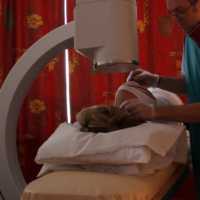“Tanezumab is a monoclonal antibody that is part of an investigational class of non-opioid chronic pain medications known as nerve growth factor (NGF) inhibitors.” Link
“Tanezumab 2.5 mg administered subcutaneously (SC), which is being evaluated for patients with chronic pain due to moderate-to-severe osteoarthritis (OA) who have experienced inadequate pain relief with other analgesics.” Link
Comments from Pfizer regarding the study of Tanezumab for chronic low back pain, July 21 2020.
“Pfizer and Lilly made the decision to prioritize tanezumab as a potential treatment for osteoarthritis, based on an assessment of the totality of SC tanezumab data and an initial discussion with the FDA.
At this time, regulatory submissions are not planned for tanezumab in patients with moderate-to-severe chronic low back pain (CLBP), but we recognize the significant patient needs and intend to maintain an open dialogue with regulatory authorities on potential future regulatory pathways for tanezumab. Additional data analyses, and potentially further clinical study, may be required to more fully characterize tanezumab in CLBP patients.“
Additional information:
Citation:
Markman, John D.a,*; Bolash, Robert B.b; McAlindon, Timothy E.c; Kivitz, Alan J.d; Pombo-Suarez, Manuele; Ohtori, Seijif; Roemer, Frank W.g,h; Li, David J.i; Viktrup, Larsj; Bramson, Candacek; West, Christine R.k; Verburg, Kenneth M.k Tanezumab for chronic low back pain, PAIN: June 25, 2020 – Volume Articles in Press – Issue – doi: 10.1097/j.pain.0000000000001928









